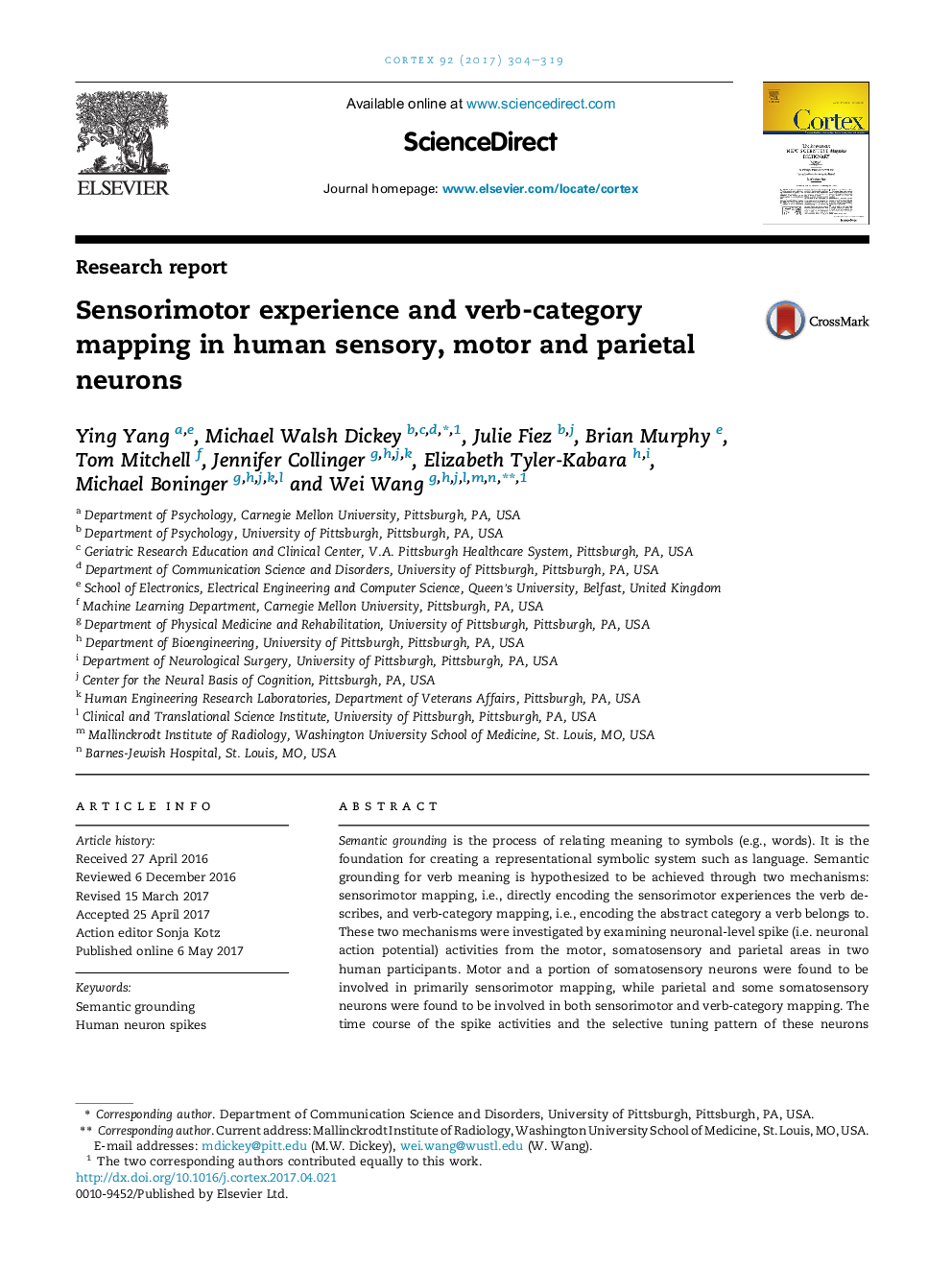| Article ID | Journal | Published Year | Pages | File Type |
|---|---|---|---|---|
| 5044509 | Cortex | 2017 | 16 Pages |
Semantic grounding is the process of relating meaning to symbols (e.g., words). It is the foundation for creating a representational symbolic system such as language. Semantic grounding for verb meaning is hypothesized to be achieved through two mechanisms: sensorimotor mapping, i.e., directly encoding the sensorimotor experiences the verb describes, and verb-category mapping, i.e., encoding the abstract category a verb belongs to. These two mechanisms were investigated by examining neuronal-level spike (i.e. neuronal action potential) activities from the motor, somatosensory and parietal areas in two human participants. Motor and a portion of somatosensory neurons were found to be involved in primarily sensorimotor mapping, while parietal and some somatosensory neurons were found to be involved in both sensorimotor and verb-category mapping. The time course of the spike activities and the selective tuning pattern of these neurons indicate that they belong to a large neural network used for semantic processing. This study is the first step towards understanding how words are processed by neurons.
